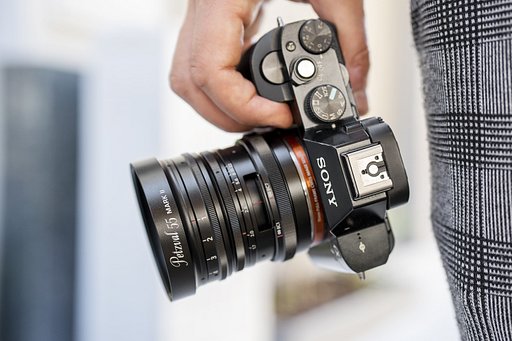Pushing, Pulling, Cross-Processing – What?
7 55Certainly, you have already heard of pushing, pulling and cross-processing. But what exactly are they? And how does it work? In this tipster, I want to present you different ways of developing films.
Pushing
Pushing is a development technique for intentionally underexposed films, making it possible to change the sensitivity of a film. With this method you can make an ISO 100 film into ISO 200 or even an ISO 400 film and gain two exposure values – in other words, I can shoot with a smaller aperture or a faster shutter speed. This technique comes in handy when you are outside and the weather changes. For example, when the sky clouds up and you only have an ISO 100 film with you and the light is insufficient; you can expose the film as if it was an ISO 400 film, hence push it two stops. All you need to do is change the ISO-setting on your camera to 400 and expose the film. It will be respectively underexposed.
Pushing is often used in black and white photography. Off the shelf, B&W films have a maximum sensitivity of 3200 ISO and can be pushed up to 25000 ISO. In colour photography, the most sensitive films have a value of 1600, when they are pushed even 3200. Pushed photos result in higher contrasts that make the picture look "grainier". This is because dark (or only little exposed) places on the negative will, of course, remain "dark" whereas light places like light sources will be emphasized even more. Colours will also look more vibrant and grain will be more visible.
In order to achieve an increase of sensitivity, the underexposed film must be specially developed. Exposure time is longer than usual when "pushing" a film. If you want to have your CN film developed, make sure to write "Push-development" and the number of steps your film should be pushed, for example "Push 2", on the bag.
Pulling
Pulling is the opposite of pushing. The sensitivity of overexposed films is lowered. A 400 ISO film is exposed like a 200 ISO film, hence pulled one step. When taking your film to the foto lab, it is important that you mention "Pull 1" or "Pulling, 1 step" on the bag. When pulling, there will be less contrast and the picture will be more fine-grained.
Altogether, pushing is more popular than pulling. Both procedures are interesting if you want to influence the contrast and grain of your photos. What is more, you don't need to worry about sudden weather changes or the wrong film choice anymore.
Cross-Processing
When cross-processing a film (also called "X-Pro") you let your films be put into the wrong developer chemicals. There is a certain type of developer for every type of film: for colour negative (C-41), black-and-white (there are lots of different black-and-white developers) and for slide film (E6). The procedures C-41 and E6 are standardized mechanical processes that differ in the temperature, development time and chemicals used.
If you want to cross-process a film, it is best you take a slide film and expose it with your camera. Then this film will not be developed in E6, the standard process for slide films, but in C-41. Make sure to tell your photo lab that the film should be developed in C-41. If you do not tell them, they will handle your slide film as such and it will end up in the E6-process. Usually, it is enough to write “cross-process” or “C-41″ on the bag you handle your photo lab. The result: instead of a positive image (which is what a slide actually is) you get negatives that you can scan. The photos often have vibrant colours, pretty grainy and usually also have a higher contrast.
Vice versa you can also cross-process a normal CN film in E6-chemicals, but you will only get tinged slides.
Altogether it can be said that pushing, pulling and cross-processing are interesting ways of influencing your photographic results. Especially by pushing or cross-processing slide film you can receive photos that show colour shifts and have a high contrast. It is important to tell your photo lab what is your desire. Normally it is enough to write them onto the photo bag. In my experience, all three of those processes are conducted by professional labs and other bigger photo labs. It often takes longer than standard development though.
Which experiences have you made with pushing, pulling or cross-processing? Information for this article are from Foto-Seminare, Fotografie-Lexikon, Fotografische.
Running out of film? No worries, you can shop our selection by visiting our online shop or one of our worldwide gallery stores! And while you're at it, spoil yourself with a camera or an accessory too!
written by frauspatzi on 2012-09-06 #gear #tutorials #developing #c-41 #cross #push #e6 #tipster #x-pro #cross-process #how-to #pull





































7 Comments